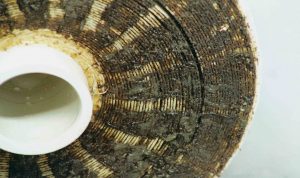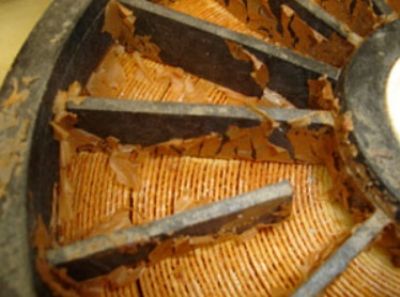Reverse Osmosis Most Commonly Asked Questions
Most Frequently Asked Questions (FAQ)
About Reverse Osmosis
1) WHAT IS THE DIFFERENCE BETWEEN CLEANING AND DISINFECTION OF YOUR RO SYSTEM?
Cleaning is the removal of foulants from the feed side of the Reverse Osmosis (RO) membrane element. There are two types of cleaners, high pH (7.5 – 11) and low pH (2.0 – 4.0). High pH cleaners remove silt and organics that clog or foul the membrane element from functioning adequately. Cleaners aid in the control of microbes by stripping the membrane element free of deposits that bacteria can adhere to, but they themselves do not kill bacteria as disinfectant does.
Disinfection decreases and controls microbial levels in the complete system both feed and product side of the membrane and fluid pathway.
Routine cleaning of the membrane elements along with regular disinfection together in large central systems will expand the life of the RO membrane element and control bacteria counts in the system. It is recommended to disinfect a portable system if the system has not been in use for more than 8 hours. The membrane elements in portable ROs should be cleaned every quarter or more often as recommended.

2) WHY DO I HAVE DECREASED PRODUCT PRESSURE (PSI) OR LOW FLOW?
Four factors affect product flow or RO water production and pressure:
The temperature of the feedwater: Incoming water temperature greatly affects the amount of product water made. RO membrane elements are rated on an ideal source water temperature of 77°F. For every 1 degree Fahrenheit lower the feedwater temperature is, the product flow is reduced by 1.5%. Temperature blending valves are commonly used on large water systems to maintain the incoming water around 77°F and for small portable RO machines, larger or more membranes elements are used to compensate for seasonal water temperature fluctuations. Some alternative membranes are also used to compensate for water temp.
RO pump pressure: RO membrane elements are designed to be operated at a specified pump pressure to create the proper product flow and rejection. Cellulosic membrane elements generally require twice the pump pressure compared to thin-film membranes. Operating the RO at a lower than suggested pump pressure will result in reduced product flow.
Cleanliness of the RO membrane element: Foulants such as silt, organics and mineral scale deposits can cover portions of the feedwater side of the membrane. These foulants can clog the membrane and obstruct the water from passing through, thus decreasing the production of RO permeate.
Low city/source feedwater pressure: It is common for municipal water systems to have various difficulties. These problems sometimes affect the incoming pressure to the RO machine. Either reduced feed water pressure or no feed water pressure can be the result. A booster pump, sometimes coupled with a bladder tank, can reduce the risk of deficient water supply. A storage tank can help in a no water situation for large RO systems. In small, portable RO units, it is best to not use the system until the feed water reaches at least 25 psi. Decreased flow through the system will cause undue wear and tear on the pump.
3) HOW LONG WILL A CARBON TANK LAST BEFORE IT BECOMES EXHAUSTED?
The length of time between carbon exchange or rebedding is dependent upon the amount of chlorine/chloramines present in the source water. How often the carbon is changed is best determined by testing for chlorine/chloramine presence before each shift. Testing the carbon annually is recommended, to determine the life of carbon. Based on the test results a pattern can be identified and a routine established to change the tanks before they become exhausted. However, when a breakthrough occurs, the carbon is exhausted and needs to be replaced.
In addition to chlorine/chloramines, carbon will also remove organics from the incoming water, and is, therefore, a perfect medium for bacteria and proliferate. It can also become fouled by dirt and suspended particles, thus reducing the efficacy of the carbon. It is a common practice to backwash carbon to clear it of this matter and prevent channeling of the carbon bed so that the water is exposed to more surfaces, which renders the carbon more efficient. However, this does not renew the carbon; when it is exhausted it must be replaced.
Since bacteria growth is a problem in the carbon tanks, it is recommended that carbon exchange tanks be changed every 3 to 6 months even if they are not exhausted, or more often before they breakthrough.
4) HOW LONG WILL RO MEMBRANE ELEMENTS LAST?
A RO membrane, which has adequate pretreatment, which is cleaned and disinfected routinely, and is maintained well, will last on an average from 3-5 years in a large system, and 1-2 years in a portable system. Along with maintenance, the quality of the source water also determines the life span of the membrane element. A higher ionic concentrated source will have more wear on the membrane element than lower ionic supply water.
Thin-film (TF) membrane elements are more durable than cellulose acetate (CA) membrane elements. TF membrane elements have a longer life on a wider variety of feed water quality and have a greater range for pH tolerance than CA membrane elements do.

5) IS IT A GOOD IDEA TO STORE PURIFIED WATER? ( Storing Purified Water – Storing RO Water)
There are advantages to a storage tank system. For instance, a smaller RO unit can be used instead of upgrading the size of the RO system when there is more boiler demand. If water supply interruption is a problem there is product water available to provide RO water for equipment required (bottling equipment, boilers etc.). There are some cases in which it is not feasible to install a direct feed system. For example, a facility that is limited on space, or a center which has the RO system reside on a lower floor than the area that is requiring the RO water.
Storage tank water distribution systems have disadvantages that are not inherent to direct RO feed systems (no storage tank). Storage systems require extra maintenance and monitoring plus the added expense of the storage tank and a distribution pump. Additional time is required in cleaning, sanitizing, monitoring, and maintaining the system. The risk of bacterial contamination is greater because of the potential stagnation and because the surface area of product water is exposed to the atmosphere.
6) SOFTENERS BEFORE CARBON TANK
Either the softener or the carbon tank can be placed first in the pretreatment flow path. Complete Water Solutions designs the system with the softener before the carbon tank to reduce the risk of bacteria exposure. Carbon tanks are primarily used for the removal of chlorine/chloramines and will therefore eventually experience microbial growth because chlorine/chloramines are what prevent microbial growth from occurring. If the carbon tank is first in line, the softener will be exposed to de-chlorinated water, which will allow for greater microbial growth in the softener, thus allowing both the carbon tank and softener to become contaminated at the same time. However, if the softener is first it is exposed to chlorinated water and the bacteria will be minimized. Bacteria and endotoxins are rejected by the RO membrane element at a rate of 99%+, but the more the membrane element is exposed to bacteria, the higher the change of the microbes to adhere and possibly “grow through” the membrane element.

